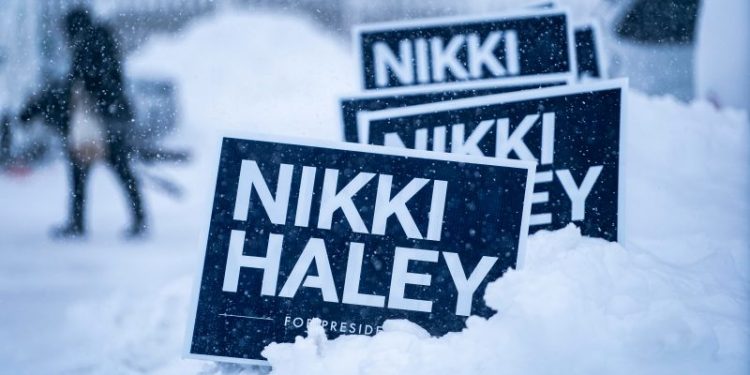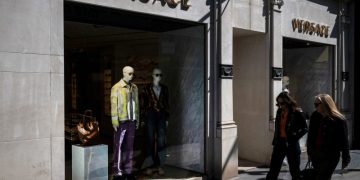The move in 1972 to begin the presidential nominating process in the Upper Midwest was greeted by frigid temperatures and a blizzard.
It took another half-century, but we’re there again.
You might have heard that the forecast in Iowa on Monday is cold — very cold. What you might not know is that this level of cold is rare and could even be unprecedented for caucuses that are always held in January or February.
That leads to obvious questions about what it might mean for turnout and the results. Some allies of Donald Trump are already spinning this as potentially diminishing his large expected win margin.
But how much colder will it be? And what might it actually mean?
Let’s break it down.
The National Weather Service forecast for Monday in Des Moines right now is a high of minus-3 degrees, with a low of minus-14. More to the point, the temperature when the caucuses start at 7 p.m. is expected to be minus-6, with a wind chill of minus-27. The state is under a blizzard warning that lasts until Saturday, with 3 to 5 inches of snow expected.
The worst weather we’ve seen on a caucus day came when Iowa first moved its Democratic contest to the front of the line in 1972. The temperatures were around zero degrees across much of the state that night, and a blizzard the previous day dropped as much as 10 inches of snow in some areas. All of it combined to force many locations to postpone their caucuses by a day or two.
Since then, though, we haven’t really seen anything amounting to this.
The other coldest temperature at 7 p.m. on caucus day came in 2004, when it was 15 degrees, according to Weather Underground. The 1976 caucuses were similarly cold.
Many who traveled to Iowa in 2008 will remember the frigid temperatures that greeted them in the days before the caucuses. But caucus night itself at 7 was a positively balmy 28 degrees.
The big question, of course, is what it could mean for voter turnout. Any proud Upper Midwesterner (raises hand) will tell you that they’re used to it, and it doesn’t matter. But everyone has their limits.
We don’t have great comparisons. That’s in part because the 1972 caucuses were so brand-new and don’t lend a direct comparison. It’s in part because there aren’t always competitive races on both sides and because Democrats don’t always report raw vote totals (only delegates). And it’s in part because virtually every competitive Republican caucus contest has featured remarkably similar temperatures, between the mid-to-high 20s and mid-30s at 7 on caucus night.
But we can say a few things.
One is that the highest turnout in competitive Republican caucuses (as a percentage of those who voted Republican in the general election) came on the two warmest nights, in 1988 and 2016. The lowest turnout came when the temperature was in the upper 20s.
But the data set is so limited and the temperatures so similar that it’s foolish to draw too many conclusions. Turnout could just as well have been affected by a host of other factors, including enthusiasm for the candidates and how competitive the race was. The 1996 caucuses were on the colder end but featured strong turnout. The 2012 caucuses were a bit warmer with lower turnout.
Academics have occasionally studied the impact of weather on votes.
A frequently cited 2007 study found that turnout dropped more among Democrats than Republicans in bad weather. But, overall, an inch of snowfall above the average led to just a 0.5 percent drop in turnout. Voters “are acclimated to weather that is typical for their region of the country,” it noted.
Other studies suggest that bad weather might affect what kind of candidates voters choose. A 2019 study found that “bad weather significantly and sizeably depresses risk tolerance, making voters less likely to vote for risky candidates.”
The question from there would be whether a candidate like Trump would be considered more risky (given his chaotic style) or less risky (because he’s a known-quantity former president).
Whatever the case, we should be prepared for candidates and their allies to spin the weather as having an impact if they fail to meet expectations. And it has already begun.
Trump’s campaign is apparently setting the stage for arguing that the weather could keep some of his supporters home. One particularly extreme supporter Trump has entertained hiring has even suggested that the “deep state” is controlling the weather to help Nikki Haley (seriously).
Trump leads in polls of the caucuses by more than 30 points, but there is an important question of whether he’ll win an outright majority and whether Iowa will help him quickly bring the nominating contest to an end.
Another possible impact is that the bad weather could reward candidates who have invested heavily in an Iowa ground game, like Trump and Florida Gov. Ron DeSantis (R). Haley has focused more on New Hampshire.
The good news is that when that much more consequential state rolls around on Jan. 23, the weather is looking more promising.






